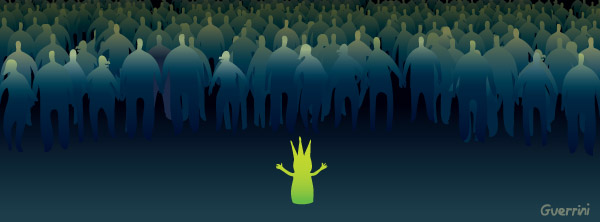The idea of identity based on the definition of one as the bearer of something pertaining and irreducible, supposes the existence of particularities or crystallised characteristics. That is to say, of a unique and irremovable essence.
Now, if it were possible to separate the essence of the being from what is innate and from what its existence generates, the debate would be another. This is because we would be separating the concept of identity from that of identification. Such identification is understood as the process through which an image is assumed as our own image, while the person recognizes himself in that image (Lacan). Less subjectively, as Freud defines it, “identification is when an attribute belonging to another is taken as belonging to us”.
Consequently, following the logic of the identification, we would be entering a non-neutral field, an active field of struggles among identification and differences. A field of comparisons and conflicts among collective identities that transform the aims of the participants.
So, any identity can be seen just as a transitory moment in the process of difference, a moment of fragmentation of the person in relation to a difference, of identification with the difference.
Thus, when we talk about the relative characteristic of the difference, it might be considered that the root of this theme is simply classification. That is to say, the process of selecting and ordering the difference, since what defines what we speak, what we think, what to do or feel, all depends on the selection of a certain system of classification and not another.
For example, let’s think about the logic of museums. The first museum was in Florence in the year 1500; there, things were classified with the available classification methods of that time: objects that were separated by a distance of thousands of years were classified in the same category. These dynamics continue nowadays, where the museums order and exhibit the objects according to their belonging to a certain place of origin, history and subject, generally adopting circumstantial prejudices under the logic, or the interest, of separating different ones, thus magnifying their own characteristics and finding themselves in opposition to others.
All this would make us think that talking about identity is talking about a process and not about an irremovable essence, and that the term “difference” is chained to that of “meaning”.
Let’s take another example: the discourse about the difference of skin colour as a determent of class: such discourse is only considered logical by certain cultures and during certain historical periods. A “biological” fact such as the difference of skin colour only makes sense when the social meaning is useful for a different “biological” group to justify their protection towards the first group. The same discourse is not implemented as a criterion in other contexts, such as when these protector groups start to talk about their nation of origin, when nations want to beat other nations in war and sports.
In this way, as Zizek says, “there are no such people as Christians, or Jews, or black people; what only exists is a system of classification induced by interests and fears of social groups”.
We can think that the resistance to the acceptation of cultural differences originated under the pressure that is exerted on identity, and the limits that a social group wants to impose from their own differentiating attributes. It would appear that we are only what we think we are, but at the same time we are part of interests of identities or collective identifications. Accordingly, we can also deduce that the threatening intruder, the foreigner, the stranger or the different one, is nothing but a projection to the exterior, the incarnation of antagonisms and the embodiment of that antagonism in an stereotype which justifies a social reaction towards the one identified as the other.
Then, it could be deduced that the difference or, better said, the social signification that the difference has, is in itself a game of power. This is why the place in which it settles is essentially political, in the general sense of the term.
In this game, modernity believes that the way the world is going will lead, inevitably, to the suppression of differences, assimilating the progress to the processes of homogenisation. This will lead to indirect consequences such as the ones that Adorno points out, who thinks that the view of total conformity directly proclaims the elimination of difference as reason.
In addition, we can think that the way a society defines and negotiates the differences among its parts explains the nature of that society, its values and levels of tolerance. The acceptance and incorporation of difference is a sign of wisdom in a society that wants to be such, that is to say, that assumes itself as a circumstantial totality.
Synthesising, in cultural terms and specifically in ideological and political terms, the relation between signification and difference is the matrix that defines a system of power, since, if we talk about the relation of a person in his condition of belonging to a certain class, ethnic origin, genre or his inscription to a religious institution, we are talking of a way to carve up society and displace the rest which is not involved in the definition of what unites society.
This property of a society is easily recognizable because it expresses itself through its discourses and the myths that these create. In the end, as Simmerl says, “the identification, the differentiation and the difference is the basis of social life”. Their narrations, stories, images and myths are the forms through which they are visible and transmissible.
© Sebastian Guerrini, 2009








